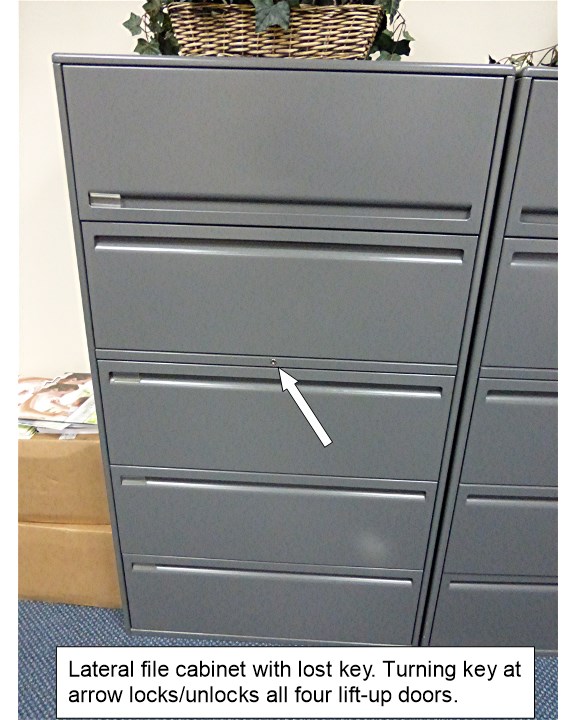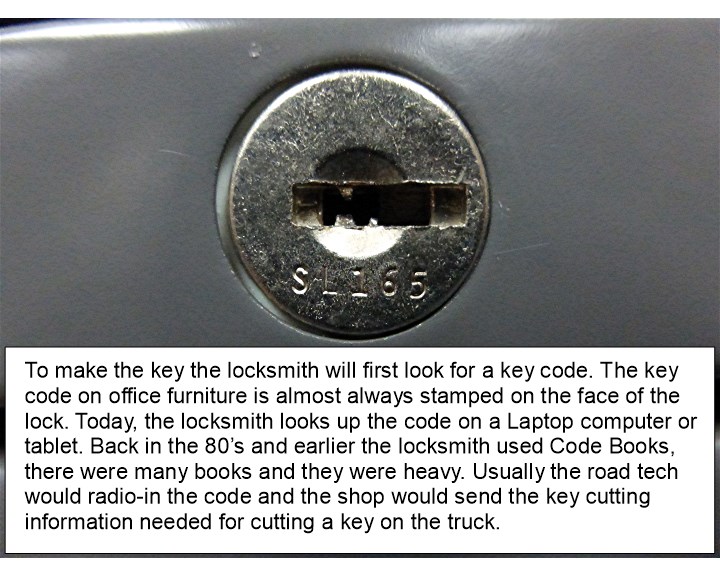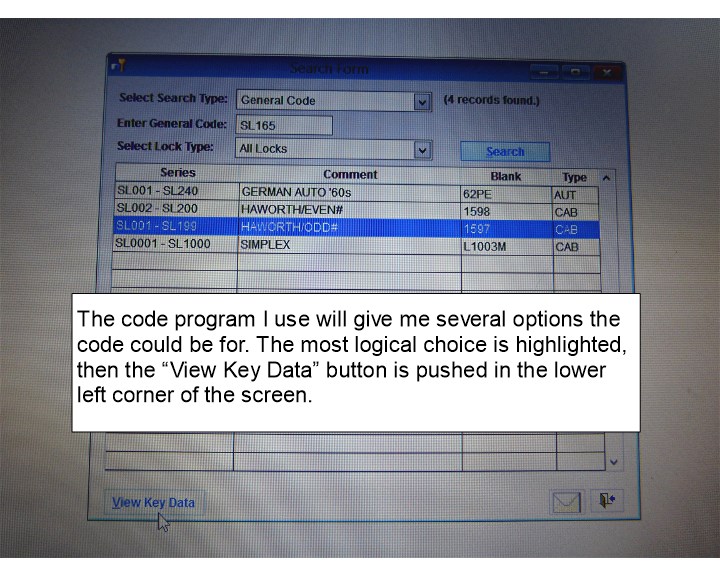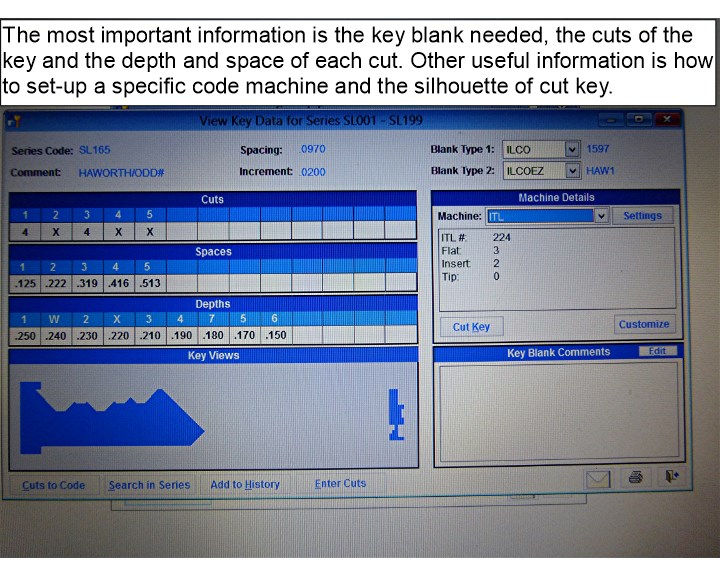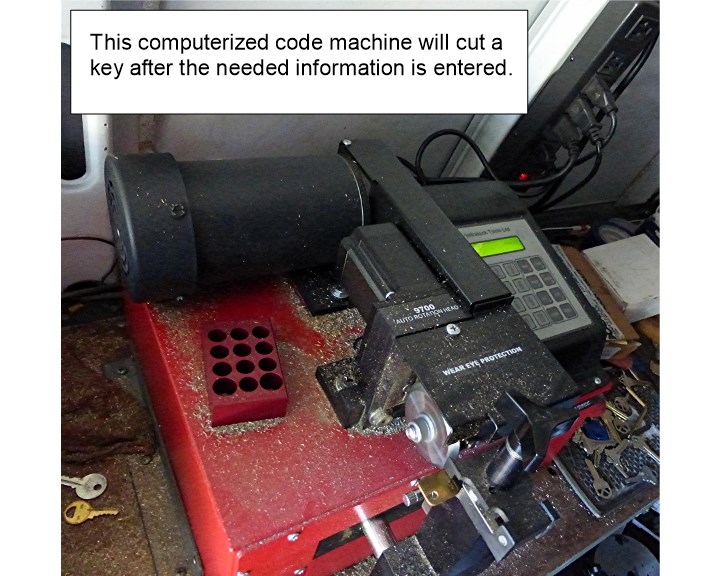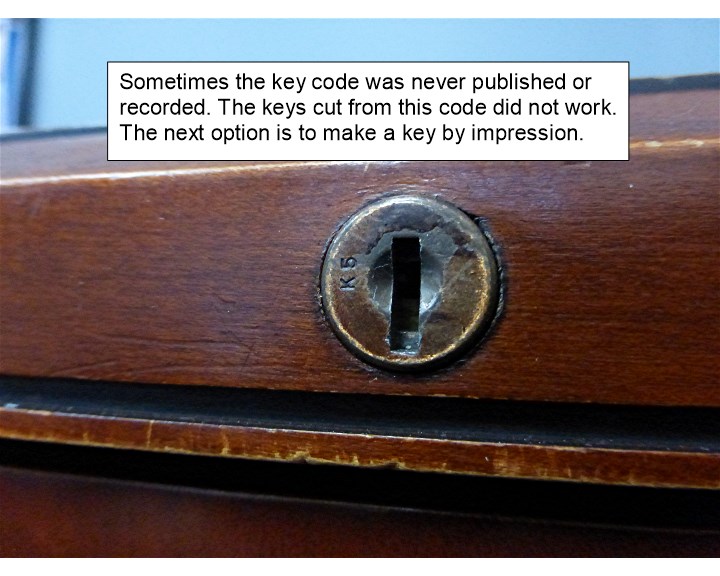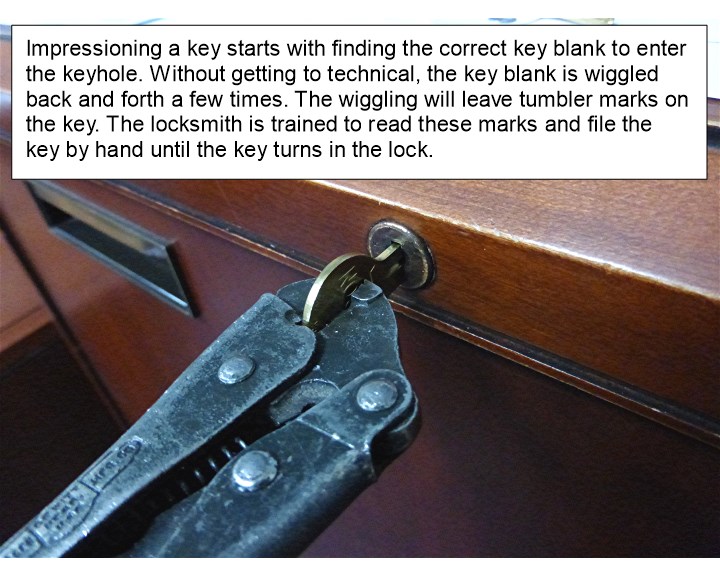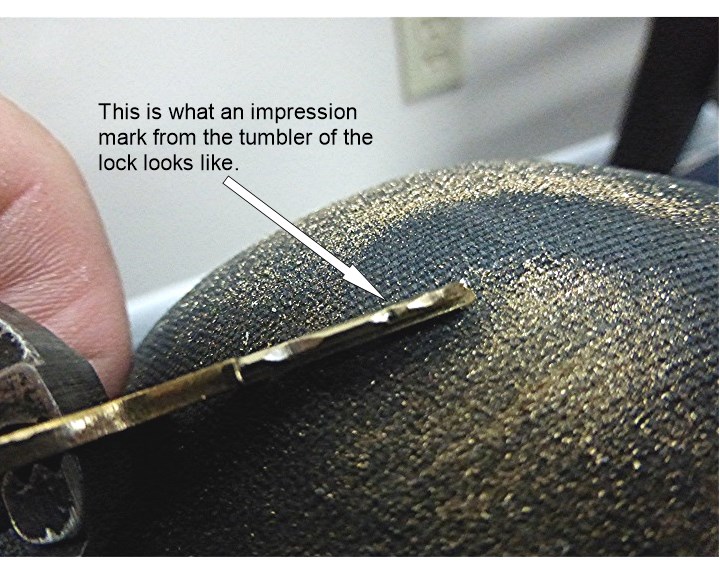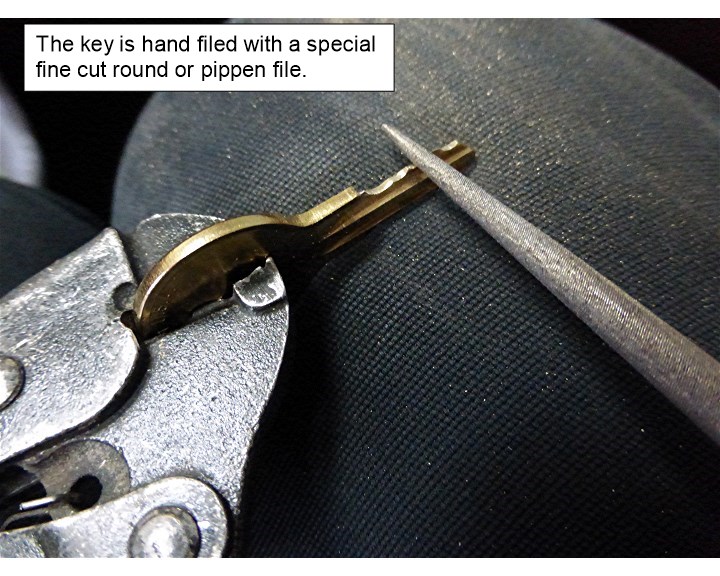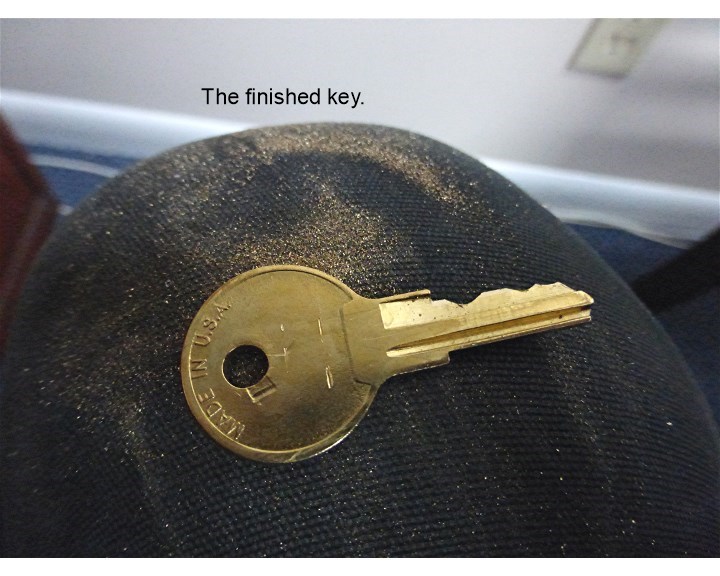One of the less-glamorous jobs for the locksmith is making keys for file cabinets, desks and credenzas. Most of this work is accomplished by using the key code stamped on the face of the lock. With the technology available today a locksmith can use a Code Program on his/her computer or tablet and figure out how to cut a key for most key codes found on office furniture, padlocks and utility boxes found on the back of trucks. When I was doing automotive locksmith work almost all the keys were cut using a key code. The trade secret and sometimes the challenge was finding the key code location. Many cars however had replaced locks or no available key codes. In those circumstances the locksmith has to make a key by disassembling the lock, or replacing the lock.
Disassembling office furniture can be a nightmare of a job. Many desk locks are simple to remove, but when one key lock is used to lock and unlock several drawers the linkage in the desk can become complex. Making a desk or file cabinet key without taking anything apart is always the desired path for the locksmith.
When a key code is unpublished or unavailable locksmiths use two methods for making the key. First, the correct key blank must be selected. Looking into the keyhole and knowing which blank to choose is the first challenge. Once the correct key is discovered the next challenge is knowing how to cut the key so it will turn in the lock. Some locksmiths prefer to use an otoscope with a probe attached. This scope is commonly used by a doctor to look in nose holes and ears. The scope is magnified and helps the locksmith identify the size difference between the tumblers in the lock. The probe is used to push down the tumblers. As the probed is dragged out of the keyhole slowly the tumblers pop-up one at a time. By examining the tumbler sizes the locksmith can reckon how the key should be cut to operate the lock. This method is called reading the tumblers.
The next method is called making a key by impression. This method involves wiggling the correct key blank in the keyhole. Inspection of the key will reveal marks. Some of these marks are dirt, some are the locks tumblers digging-in, or making an impression in the key blade. The experienced locksmith knows how to interpret the marks and hand file the cuts into the key blank until the key turns in the lock.
Some office furniture uses flat steel keys. It is not common to read the tumblers or make an impression of a flat steel key. Usually these locks must be removed from the furniture before a key can be made.

